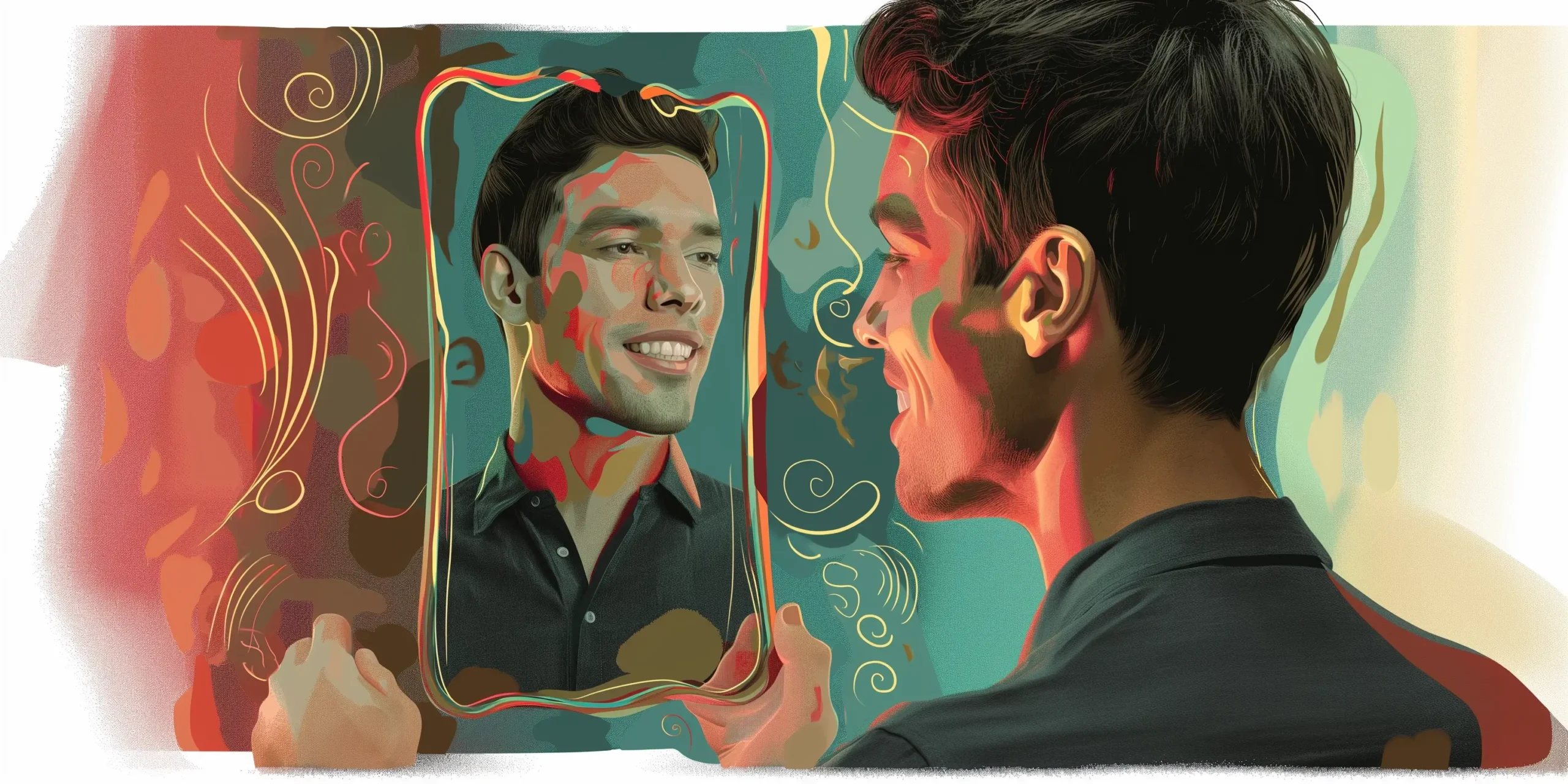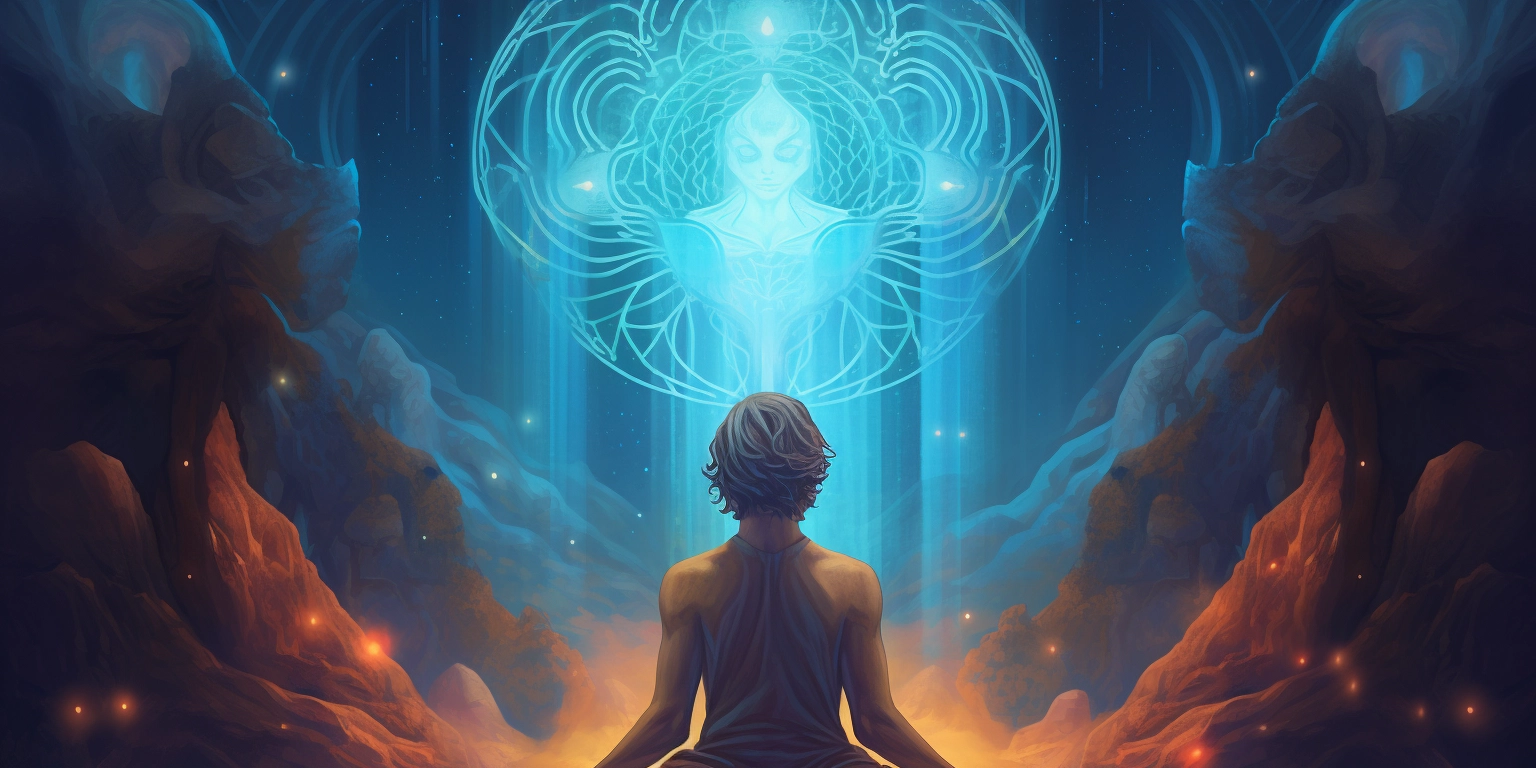After two puffs on the vaporizer, a tingling sensation crawled over me, the world became overlaid with a monochromatic series of fractals, and it felt as if my very atoms were beginning to spin apart—not in an unpleasant way, but it was certainly an unusual sensation. Fear leapt up, and for a moment, I hesitated to go any further, but the man who had sold me the DMT vape had said that at least three hearty drags were necessary if I wanted to “break through,” so I gave the golden tube a tertiary pull. Funkadelic’s “Hit It and Quit It” happened to be playing in the background, and I inadvertently managed to follow both pieces of advice. For after that final draw, reality as I know it kind of spun apart, and I’m assuming my body simply fell back on the couch. I’m not sure because I—or at least my consciousness—wasn’t there anymore. It was Someplace Else.
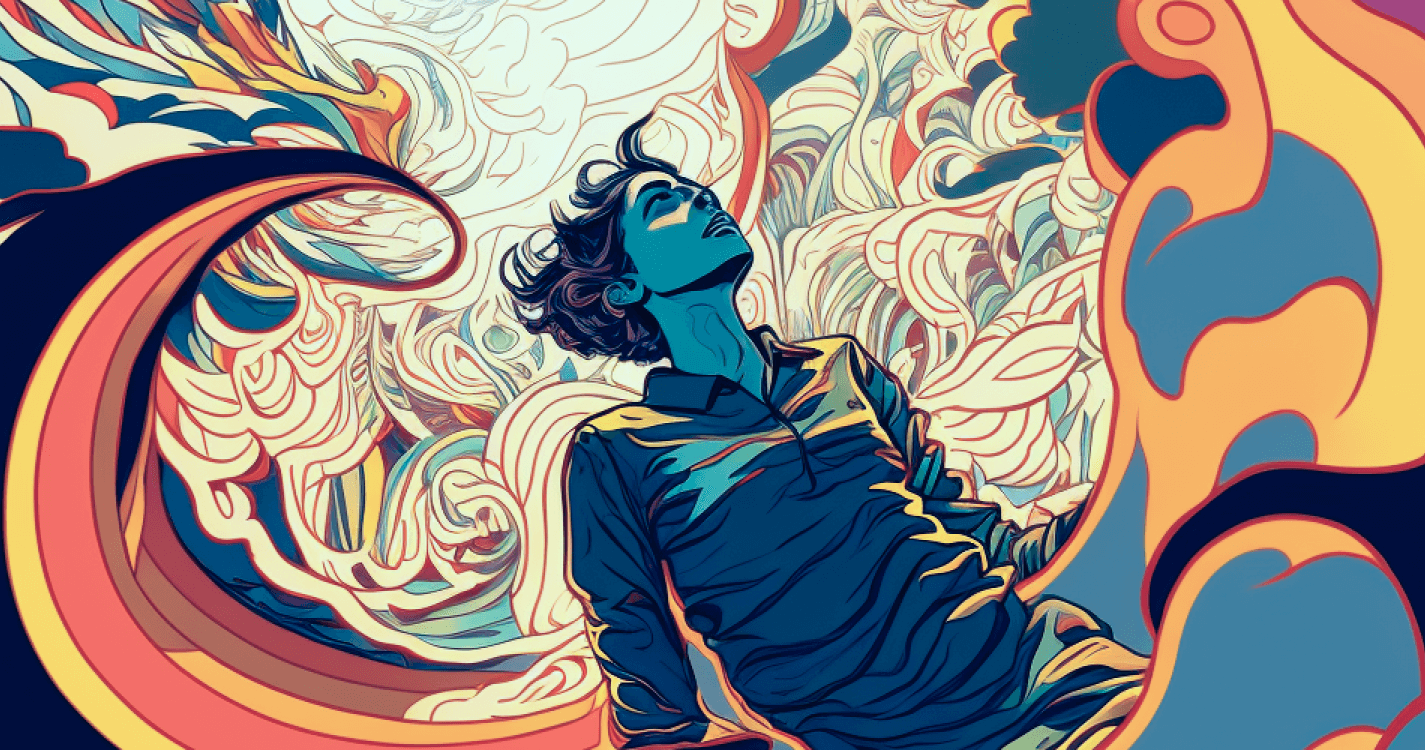
I had experienced LSD and psilocybin hundreds of times—had even gone to the strange well of ayahuasca on occasion—but none of it compared to the absolute otherworldliness presented by pure DMT.
What Is DMT?
N,N-dimethyltryptamine—more commonly known as DMT—is a psychoactive compound that shares its skeletal structure with its more popular cousins: LSD and psilocybin. Though its effects are similar to other psychedelics, they certainly are not the same. More on what, precisely, those effects are in a moment.(1)
I chatted with the preeminent DMT expert Dr. Rick Strassman—author of DMT: The Spirit Molecule and, most recently, The Psychedelic Handbook—and he provided some insight into where this strange and powerful drug comes from and how it’s unique from others in the psychedelic family.(2, 3)
Keep Up with Uncensored Psychedelic Trends
Join our newsletter at Psychedelics Uncensored.
We respect and protect your privacy. By subscribing your info will be subject to our privacy policy . Unsubscribe easily at any time
“DMT is ubiquitous in the natural world, both animal and plant,” he explained. “It is endogenous to mammals, including humans”—meaning it is manufactured by our bodies—” and concentrations in the brain are as high as those for neurotransmitters like serotonin and dopamine, suggesting the existence of a DMT neurotransmitter system. And the levels of DMT rise in the dying brain. These are all unique properties. In addition, tolerance to DMT does not occur after closely spaced repeated dosing, in contrast to other classical psychedelics like LSD and psilocybin.”
While there has been some debate as to whether the human body produces DMT, Dr. Strassman is dismissive of the arguments against it.(4, 5)
“There is no question that DMT is produced in the mammalian brain,” he asserted. “There’s a 2019 paper in Scientific Reports that definitively establishes this. I do not know why some people have such a difficult time accepting this fact. What the role of endogenous DMT might be is a burning question that, strangely enough, only two people in the world are examining: Jon Dean at UC San Diego and Nic Glynos at the University of Michigan.”(6, 7)
The theory that the human brain produces DMT implies that it must have some evolutionary function for our survival.
“To the extent that the hallmark of a DMT experience is the sense that what one is witnessing is more real than real, it is tempting to speculate that a DMT neurotransmitter system may regulate our sense of reality,” Dr. Strassman explained. “To the extent that the panacea-like effects of psychedelics are mediated through a magnification of the placebo effect, DMT may be involved in the everyday placebo effect.”
In other words, it perhaps plays a role in how we experience reality and how we cope with the challenges that reality, all too frequently, throws our way.
Keep Up with Psychedelic Trends
Get uncensored psychedelic news, events, and updates. Join Psychedelics Uncensored!
We respect and protect your privacy. By subscribing your info will be subject to our privacy policy . Unsubscribe easily at any time
“DMT is also neuroprotective in conditions of ischemia (an inadequate blood supply to an organ or part of the body, especially the heart muscles) and promotes neurogenesis and neuroplasticity,” he continued. Neuroplasticity is the process by which the human brain rewires itself to adapt to change, while neurogenesis is the production of new neurons, which are responsible for transmitting signals through the brain. So DMT seems to help our brains regrow and build new pathways for processing information. “The elevation in brain levels in the dying brain may be an attempt to minimize damage and promote regrowth. Why such a compound is a psychedelic, however, is a mystery. That is, why does it have any psychoactive effects at all?”(8, 9, 10, 11)
What, Exactly, Are the Psychoactive Effects of DMT?
It kind of depends on how you take it. Historically speaking, DMT has most commonly been associated with ayahuasca, a combination of DMT and an MAOI (monoamine oxidase inhibitor) derived from plants native to the upper-South American countries. While ayahuasca certainly bestows a dramatic experience upon those who take it, for our purposes here, we’re discussing DMT itself. DMT is typically either vaporized and inhaled or—in lab studies—delivered intravenously. Its effects in this form are almost alien in nature. And I do mean alien, as in extraterrestrial.(12)
DMT users almost ubiquitously describe how the drug sends them to another universe or dimension comprised of an infinitely elaborate series of fractalized structures. Residing in these structures, users report, are creatures that the renowned psychedelic researcher Terence McKenna famously referred to as “machine elves.”
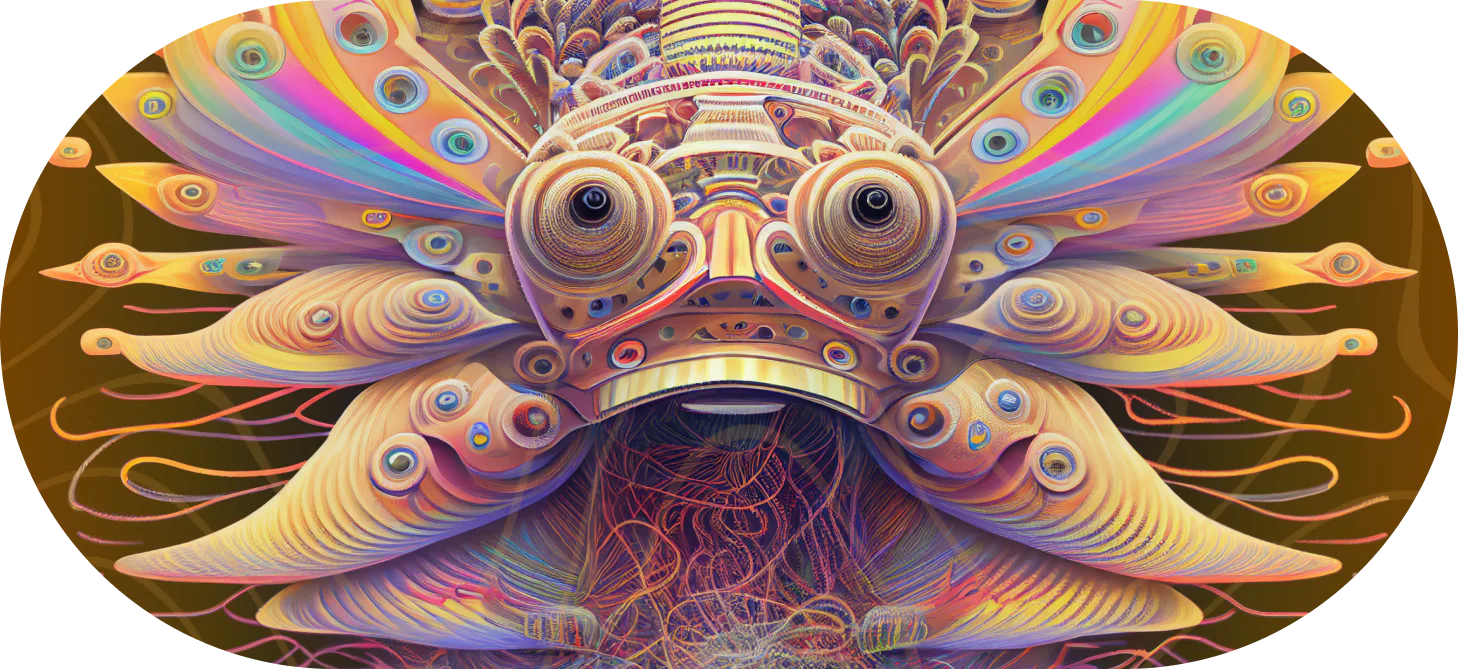
“I prefer the term beings,” Dr. Strassman told me. “I think they contain and convey person-specific information that was previously invisible. They feel more real than real, but their ontological foundation cannot be determined at this point. Rather than fruitlessly and endlessly struggling to determine where the beings reside, I believe the more important question is how to extract the most information possible from their presence.”
That’s right—extract information—because DMT users frequently communicate with these beings. I’ve communicated with them myself.
During my first DMT experience (warning: words are imprecise tools for describing such a happening, so you’ll have to bear with me), I was catapulted out of our reality—or maybe our reality fell away? In any case, I wasn’t here anymore. Instead, I went to a place where I was moving through a landscape of constantly shifting, fractalized, kaleidoscopic architecture that seemed to be adjacent to or underpinning our dimension. It was more like the crawlspace between realities—a sort of interstitial space, the structure of which supports all the other dimensions. At least, that’s what it seemed like to me.
In this Other Place, I landed or settled in a hallway that zoomed off in every direction simultaneously. As I arrived, there happened to be a being of burning, orange light that had a distinctly feminine energy. The moment she noticed me, her plasmatic glow flamed up, and she seemed to nearly pounce on me. It wasn’t a violent or maleficent gesture, but seemed more a spontaneous action of desire. I got the sense that she was lonely and saw in me some kindred—if cross-dimensional—spirit, and craved my proximity.
Her approach was so hungry, however, that it initially alarmed me—she freaked me out, is what I’m saying—and I sort of withdrew my consciousness. She seemed to realize that she’d pushed too hard and fast, and she pulled back and dampened her fire a bit. I recognized that she didn’t mean me any harm, but as I attempted to re-engage my consciousness with her, I was suddenly slingshotted back to our reality, where I sat on the couch feeling my atoms recollect. I wanted to see her again and see what was what, so I took up the vape and drew another few mighty puffs.
This time when I zoomed back into the Not Quite Here, it was clearly not the same place. Similar architecture but different coordinates. Or something like that. The feminine being was gone, and I instead spotted a morose-looking, gray-toned male figure slouching his way around a corner. I communicated with him (somehow) and asked where the other being was. He stopped and gave this kind of shrugging, “I don’t know, man. It’s a big place.” He made as if to continue down the hall and paused when I persisted in trying to communicate, but he seemed to be busy and on his way to some important task—I got the sense that the beings worked in this Other Place, as if they’re the ones who keep the pipes of existence flowing, so to speak—so he didn’t stop, but did communicate something akin to, “I guess while you’re here, you might as well learn what the whole thing is all about.”
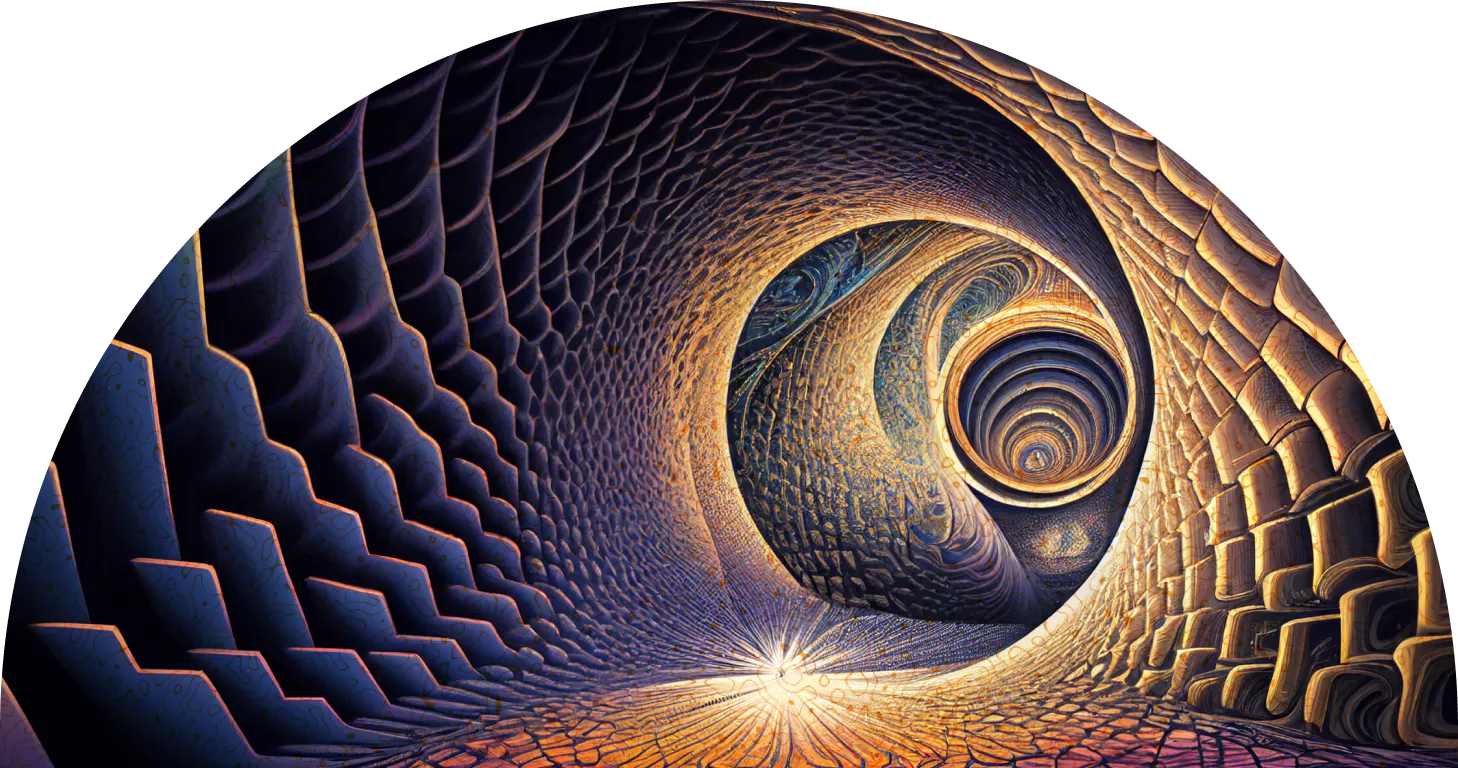
Suddenly the place became a whirling carnival of light—rides spinning, crowds of laughing attendees jostling, a great jester head of neon rising out of it all. Back in our reality, Funkadelic’s “You And Your Folks, Me And My Folks” was playing, and it was bleeding through into wherever I was—it became the soundtrack to the circus. I moved through it all, a bit disoriented and bewildered. The beings were everywhere, and a distinct thought crossed my mind: “These are stylish, sexy demons.” Not demons in a malevolent sense, but in that they lived beyond the concerns of our reality, our sense of right or wrong, good or evil. The opening guitar licks of “Super Stupid” rang out, and I suddenly got the impression that hedonism was part of the language of the place: that sex, music, and drugs were the gateway in. This struck me as rather obvious. Of course, they were! Was it not DMT that had brought me there? And had sex and music not forever helped humanity to transcend our reality? There were other routes there, but these keys were mine. And I got the sense that some immense secret had just been revealed to me (then promptly forgotten).
Then I was slipping out of that place. It all began to fade as my atoms reassembled and my consciousness returned to my body, which was tingling all over. “Back In Our Minds” began playing. The entire thing lasted a mere three songs.
What Are DMT Entities or Beings?
“The phenomenology of the DMT experience is rather consistent across individuals,” Dr. Strassman later told me. “That is, entry into a disembodied world of light full of content, including discernible beings. This points to a brain basis of the phenomenology.”
While those who have tried it tend to draw somewhat different meanings from the DMT experience, one phrase—as Dr. Strassman mentioned previously—is that it feels more real than reality itself: a sentiment that I can corroborate.
“The individualized takeaways that you refer to are dependent on the pre-existing more or less conscious contents of the person’s mind,” Dr. Strassman explained. “That is, if someone is struggling with career issues, information regarding those issues will be available in the altered state. That’s why the best term for these drugs is ‘psychedelic,’ mind-manifesting, or mind-disclosing.”
There are wide-ranging theories as to why DMT users report such markedly similar experiences. Some of the more radical thinkers assert that the drug literally introduces us to a different dimension—some higher reality that is populated by what are very real entities. Others more modestly suggest that perhaps this other universe and the peoples that populate it are merely projections from our individual minds—a sort of psychedelic Rorschach Test. Psychonaut James Kent, for example, claimed that he has attempted to determine whether or not DMT beings could provide him with knowledge he did not already possess, and they failed to do so. Others believe that DMT users see entities simply because they go into the experience with the expectation that they will, as many are familiar with the works of Rick Strassman and Terence McKenna.(13)
In my case, I will admit that this other dimension is very convincing. It’s difficult to come away from it and the beings I encountered there without the distinct feeling that I’ve experienced something genuine and profound, the significance of which I haven’t quite managed to grasp. More experimentation is required.
So, does DMT provide a brief glimpse of another dimension? Is that Other Place real? And the Entities—are they real? And if so, do they have something to teach us? Or is it all just in our heads?
There’s only one way to find out.
Maybe I’ll run into you there.
Sources

1. Cameron, L. P., & Olson, D. E. (2018). Dark Classics in Chemical Neuroscience: N,N-Dimethyltryptamine (DMT). ACS Chemical Neuroscience, 9(10), 2344–2357. https://doi.org/10.1021/acschemneuro.8b00101
2. Strassman, R. (2001). DMT: The Spirit Molecule: A Doctor’s Revolutionary Research Into the Biology of Near-Death and Mystical Experiences. Park Street Press.
3. Strassman, R. (2022). The Psychedelic Handbook. Simon and Schuster.
4. Nichols, D. E. (2017). N,N-dimethyltryptamine and the pineal gland: Separating fact from myth. Journal of Psychopharmacology, 32(1), 30–36. https://doi.org/10.1177/0269881117736919
5. Nichols, C. D. & Nichols, D. E. (2020). DMT in the Mammalian Brain: A Critical Appraisal. ALIUS Bulletin, 4, 16-22, https://orbi.uliege.be/bitstream/2268/291053/1/alius_bulletin_n%C2%B04.pdf#page=24
6. Jon Dean | UCSD Profiles. (n.d.). Profiles.ucsd.edu. Retrieved February 27, 2023, from https://profiles.ucsd.edu/jon.dean
7. Nicolas Glynos | Molecular & Integrative Physiology | Michigan Medicine. (2019, July 6). Molecular & Integrative Physiology. https://medicine.umich.edu/dept/molecular-integrative-physiology/nicolas-glynos
8. Kalogeris, T., Baines, C. P., Krenz, M., & Korthuis, R. J. (2016). Ischemia/Reperfusion. Comprehensive Physiology, 113–170. https://doi.org/10.1002/cphy.c160006
9. Cramer, S. C., Sur, M., Dobkin, B. H., O’Brien, C., Sanger, T. D., Trojanowski, J. Q., Rumsey, J. M., Hicks, R., Cameron, J., Chen, D., Chen, W. G., Cohen, L. G., deCharms, C., Duffy, C. J., Eden, G. F., Fetz, E. E., Filart, R., Freund, M., Grant, S. J., & Haber, S. (2011). Harnessing neuroplasticity for clinical applications. Brain, 134(6), 1591–1609. https://doi.org/10.1093/brain/awr039
10. Szabó, Í., Varga, V. É., Dvorácskó, S., Farkas, A. E., Körmöczi, T., Berkecz, R., Kecskés, S., Menyhárt, Á., Frank, R., Hantosi, D., Cozzi, N. V., Frecska, E., Tömböly, C., Krizbai, I. A., Bari, F., & Farkas, E. (2021). N,N-Dimethyltryptamine attenuates spreading depolarization and restrains neurodegeneration by sigma-1 receptor activation in the ischemic rat brain. Neuropharmacology, 192, 108612. https://doi.org/10.1016/j.neuropharm.2021.108612
11. Calder, A.E., Hasler, G. Towards an understanding of psychedelic-induced neuroplasticity. Neuropsychopharmacol. 48, 104–112 (2023). https://doi.org/10.1038/s41386-022-01389-z
12. D’Souza, D. C., Syed, S. A., Flynn, L. T., Safi-Aghdam, H., Cozzi, N. V., & Ranganathan, M. (2022). Exploratory study of the dose-related safety, tolerability, and efficacy of dimethyltryptamine (DMT) in healthy volunteers and major depressive disorder. Neuropsychopharmacology, 47(10), 1854–1862. https://doi.org/10.1038/s41386-022-01344-y
13. Kent, J. The Case Against DMT Elves. (2004, May 4). Tripzine.com. Retrieved February 27, 2023, from https://tripzine.com/listing.php?id=dmt_pickover
This material is not intended as a replacement or substitute for any legal or medical advice. Always consult a medical professional about your health needs. Psychedelics are widely illegal in the United States, and readers should always be informed about local, state, and federal regulations regarding psychedelics or other drugs.
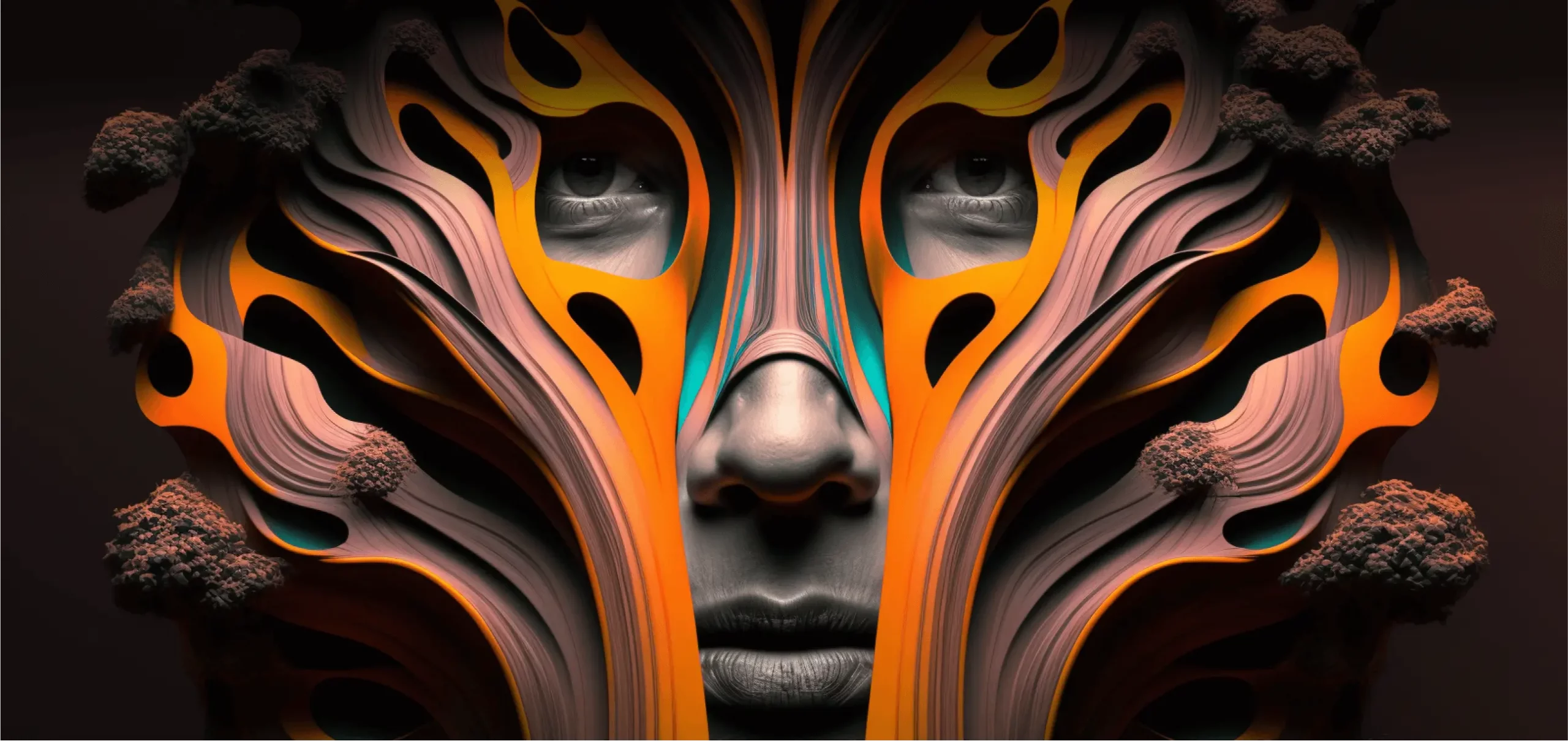
 Nick Hilden
Nick Hilden
 David Connell
David Connell